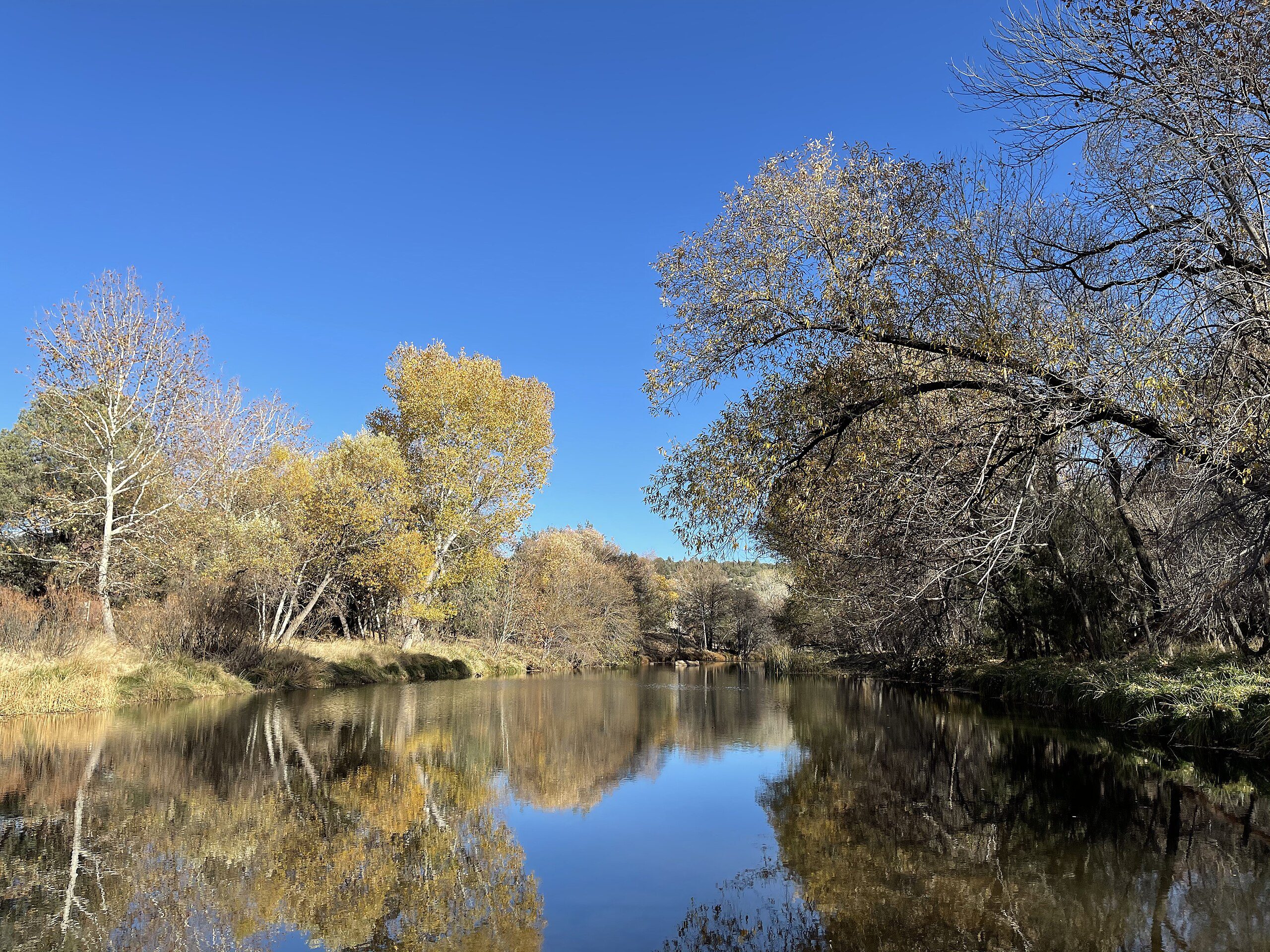- The Verde River supplies water to farms and urban areas in Arizona.
- Companies and conservation groups have collaborated on water resilience projects in the Verde River basin.
- These projects focus on improving stream health, reducing wildfire risk, and increasing water delivery efficiency.
- Examples include forest restoration, irrigation system upgrades, and invasive plant removal.
- Key lessons for success include building social infrastructure, ensuring community relevance, adopting a long-term perspective, and setting flexible goals.
September 3, 2024 — The Verde River, a tributary of the Colorado River, is vital for providing water to both agricultural and urban areas in Arizona. It is a federally designated Wild and Scenic River .
.
The Nature Conservancy writes :
:
One of Arizona’s only federally designated Wild and Scenic Rivers, the Verde River springs from the ground in the rural community of Paulden, southwest of Flagstaff. It meanders southeastward 195 miles through private, federal, state and tribal land before reaching its confluence with the Salt River near Phoenix. While the Verde’s preservation is vital to wildlife and recreation in Arizona, it is also essential to the health of the river’s watershed, which feeds many Arizona communities downstream. Competing demands for water are putting pressure on the watershed. Looming development over the aquifer that supplies the Verde River could reduce the flow of water not only to downstream users, but to the plants and animals that depend on it.
Factors like water withdrawals, groundwater pumping, climate change, and drought are thought to threaten the river.
Quoting an article from Trellis.net, the Walton Family Foundation reports that various name-brand companies such as Boeing, REI, Coca-Cola, Google, Microsoft and others have partnered with conservation organizations like The Nature Conservancy
reports that various name-brand companies such as Boeing, REI, Coca-Cola, Google, Microsoft and others have partnered with conservation organizations like The Nature Conservancy and Friends of the Verde River
and Friends of the Verde River to address these challenges. Over the past decade, they have supported numerous projects to enhance the river’s resilience. These projects have focused on diverse areas like forest restoration to reduce wildfire risk, upgrading irrigation systems for improved water conservation, and removing invasive plants to enhance water flow.
to address these challenges. Over the past decade, they have supported numerous projects to enhance the river’s resilience. These projects have focused on diverse areas like forest restoration to reduce wildfire risk, upgrading irrigation systems for improved water conservation, and removing invasive plants to enhance water flow.
One notable example is the partnership to restore forest health in the Verde River’s headwaters. This initiative, supported by companies such as EdgeCore, PepsiCo, Apple, Meta, and Google, has reduced the risk of catastrophic wildfires, which can severely impact water supplies and infrastructure.
Another successful project involved upgrading outdated irrigation ditches in the middle Verde watershed. Through collaboration between irrigation districts and The Nature Conservancy, over four miles of ditches were piped, and new water control structures were installed. This work has increased water conservation and improved stream flows.
These collaborative efforts in the Verde River basin demonstrate a model for investing in water resilience. Key takeaways for replicating this success in other regions include building social infrastructure, ensuring projects align with community priorities, adopting a long-term perspective, and setting flexible goals that can adapt to evolving water challenges and community needs.
Image:
“The East Verde River flows thru the East Verde Estates northwest of Payson ,” by Richard N Horne, November 2020. Licensed under the Creative Commons Attribution-Share Alike 4.0 International license.
,” by Richard N Horne, November 2020. Licensed under the Creative Commons Attribution-Share Alike 4.0 International license.





Leave a Reply